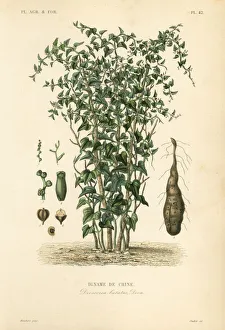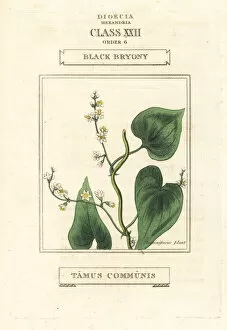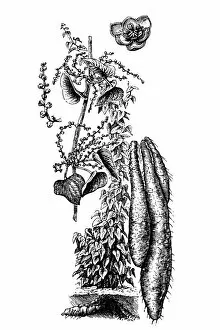Dioscorea Collection
"Dioscorea: A Diverse World of Edible Tubers and Nutritious Delights" Dioscorea, commonly known as yam
All Professionally Made to Order for Quick Shipping
"Dioscorea: A Diverse World of Edible Tubers and Nutritious Delights" Dioscorea, commonly known as yam, encompasses a fascinating array of edible tubers that have been cherished for centuries across different cultures. From the Chinese yam or cinnamon-vine (Dioscorea polystachya) to the black bryony (Dioscorea communis), this versatile plant family offers an abundance of culinary possibilities. One captivating member is the yam or cinnamon-leaved dioscorea (Dioscorea cinnamonifolia), with its distinctive aroma and flavor that adds depth to various dishes. Another intriguing variety is the elephants foot (Dioscorea elephantipes), which boasts peculiarly shaped tubers resembling an elephant's foot. In addition to these unique species, it also includes other plants like Crescentia cujete, Sesamum indicum, Bombax ceiba, Hibiscus sabdariffa, Theobroma cacao, Citrus decumana, Arum esculentum, Zea mays, Artocarpus incisa, Amaranthus sanguineus Jatropha manihot Cocos nucifera Cucurbitapepo Ricinus communis Dioscoreasa - all contributing their own distinct flavors and textures when incorporated into culinary creations. The ripe red fruit of black bryony (Dioscoreacommunis) serves as a cautionary reminder; while it may be visually appealing in hedgerows across Berkshire in England, it is indeed a poisonous medicinal plant best left untouched by untrained hands. Various types of Yam such as Rhizome and tincture from Dioscoria villosasliced rhizome from Dioscoria opposita (Shan yao), and sliced rhizome from Dioscori hypoglauca (Bei xie) are also cherished for their culinary and medicinal properties.













